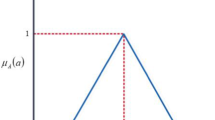Abstract
This study presents a microstructural topology optimization-based method for dealing with the problem of minimizing the sound power flow that radiates from a vibrating composite plate. The plate is assumed to be constructed with periodic microstructures that are uniformly distributed over the macrostructural domain. The design variable in this case is the relative material volume density of the unit cell of the microstructure. The equivalent macromaterial properties of the microstructure are calculated using the homogenization method, and the bi-material solid isotropic material with penalization model is employed to achieve a zero-one design at a microscale. The high frequency approximation formulation and the weak coupling assumption are adopted to achieve an efficient overall analysis and sensitivity analysis of the coupling system. The proposed method is validated by several numerical examples. Results show that effective vibroacoustic isolation may be implemented by the topology design of periodical microstructures.
Similar content being viewed by others
References
G. H. Yoon, Topological design of heat dissipating structure with forced convective heat transfer, Journal of Mechanical Science and Technology, 24 (6) (2010) 1225–1233.
C. Kim and J. Lee, Topology optimum design of unimorph piezoelectric cantilevered Mindlin plates as a vibrating electric harvester, Journal of Mechanical Science and Technology, 28 (10) (2014) 4131–4138.
G. H. Yoon, J. S. Jensen and O. Signumd, Topology optimization of acoustic-structure interaction problems using a mixed finite element formulation, Int. J. Numer. Methods Eng., 70 (9) (2007) 1049–1075.
J. B. Du and N. Olhoff, Minimization of sound radiation from vibrating bi-material structures using topology optimization, Struct. Multidisc Optim., 33 (4–5) (2007a) 305–321.
J. B. Du and N. Olhoff, Topological design of freely vibrating continuum structures for maximum values of simple and multiple eigenfrequencies and frequency gaps, Struct. Multidisc Optim., 34 (2) (2007b) 91–110.
M. B. Duhring, J. S. Jensen and O. Sigmund, Acoustic design by topology optimization, J. Sound Vib., 317 (3–5) (2008) 557–575.
J. B. Du and N. Olhoff, Topological design of vibrating structures with respect to optimum sound pressure characteristics in a surrounding acoustic medium, Struct. Multidisc Optim., 42 (1) (2010) 43–54.
O. Sigmund, Materials with prescribed constitutive parameters: an inverse homogenization, Int. J. Solids Struct., 31 (17) (1994) 2313–2329.
D. Fujii, B. C. Chen and N. Kikuchi, Composite material design of two-dimensional structures using the homogenization design method, Int. J. Numer. Methods Eng., 50 (9) (2001) 2031–2051.
S. L. Xu and G. D. Cheng, Optimum material design of minimum structural compliance under seepage constraint, Struct. Multidisc Optim., 41 (4) (2010) 575–587.
R. Z. Yang and J. B. Du, Microstructural topology optimization with respect to sound power radiation, Struct. Multidisc Optim., 47 (2) (2013) 191–206.
H. C. Rodrigues, J. M. Guedes and M. P. Bendsoe, Hierarchical optimization of material and structure, Struct. Multidisc Optim., 24 (1) (2002) 1–10.
L. Liu, J. Yan and G. D. Cheng, Optimum structure with homogeneous optimum truss-like material, Comput. Struct., 86 (13–14) (2008) 1417–1425.
J. Yan, G. D. Cheng and L. Liu, A homogeneous optimum material based model for concurrent optimization of thermoelastic structures and materials, Chin. J. Comput. Mech., 26 (1) (2009) 1–7.
B. Niu, J. Yan and G. D. Cheng, Optimum structure with homogeneous optimum cellular material for maximum fundamental frequency, Struct. Multidisc Optim., 39 (2) (2009) 115–132.
W. H. Zhang and S. P. Sun, Scale-related topology optimization of cellular materials and structures, Int. J. Numer. Methods Eng., 68 (9) (2006) 993–1011.
S. T. Liu and W. Z. Su, Topology optimization of couple-stress material structures, Struct. Multidisc Optim., 40 (1–6) (2010) 319–327.
M. F. Pantano, H. D. Espinosa and L. Pagnotta, Mechanical characterization of materials at small length scales, Journal of Mechanical Science and Technology, 26 (2) (2012) 545–561.
M. Lax and H. Feshbach, On the radiation problem at high frequencies, J. Acoust. Soc. Am., 19 (4) (1947) 682–690.
J. B. Du, X. K. Song and N. Olhoff, Topological design of acoustic structure based on the BEM-FEM format and the mixed formulation, Proc. of the 9th World Congress on Structural and Multidisciplinary Optimization (2011a) Shizuoka, Japan (2011).
J. B. Du, X. K. Song and L. L. Dong, Design of material distribution of acoustic structure using topology optimization, Chin. J. Theor. Appl. Mech., 43 (2) (2011b) 306–315.
M. P. Bendsoe and N. Kikuchi, Generating optimal topologies in structural design using a homogenization method, Comput. Meth. Appl. Mech. Eng., 71 (2) (1988) 197–224.
G. I. N. Rozvany, M. Zhou and T. Birker, Generalized shape optimization without homogenization, Struct. Optim., 4 (3–4) (1992) 250–252.
S. T. Liu, G. D. Cheng, Y. Gu and X. G. Zheng, Mapping method for sensitivity analysis of composite material property, Struct. Multidisc Optim., 24 (3) (2002) 212–217.
K. Svanberg, The method of moving asymptotes — a new method for structural optimization, Int. J. Numer. Methods Eng., 24 (2) (1987) 359–373.
Author information
Authors and Affiliations
Corresponding author
Additional information
Recommended by Guest Editor Joo-Ho Choi
Jianbin Du obtained his Ph.D. in solid mechanics from Tsinghua University in 1999. He then worked as a postdoctoral researcher in the Department of Aerospace Engineering at the University of Michigan from 1999 to 2001 and in the Institute of Mechanical Engineering at Aalborg University from 2002 to 2003. From 2003 to 2005, he served as a research assistant professor in the Machine Acoustic Center of Aalborg University. He has been serving as an assistant professor since 2006 and as an associate professor since 2007 in the School of Aerospace Engineering at Tsinghua University.
Rights and permissions
About this article
Cite this article
Du, J., Yang, R. Vibro-acoustic design of plate using bi-material microstructural topology optimization. J Mech Sci Technol 29, 1413–1419 (2015). https://doi.org/10.1007/s12206-015-0312-x
Received:
Revised:
Accepted:
Published:
Issue Date:
DOI: https://doi.org/10.1007/s12206-015-0312-x




